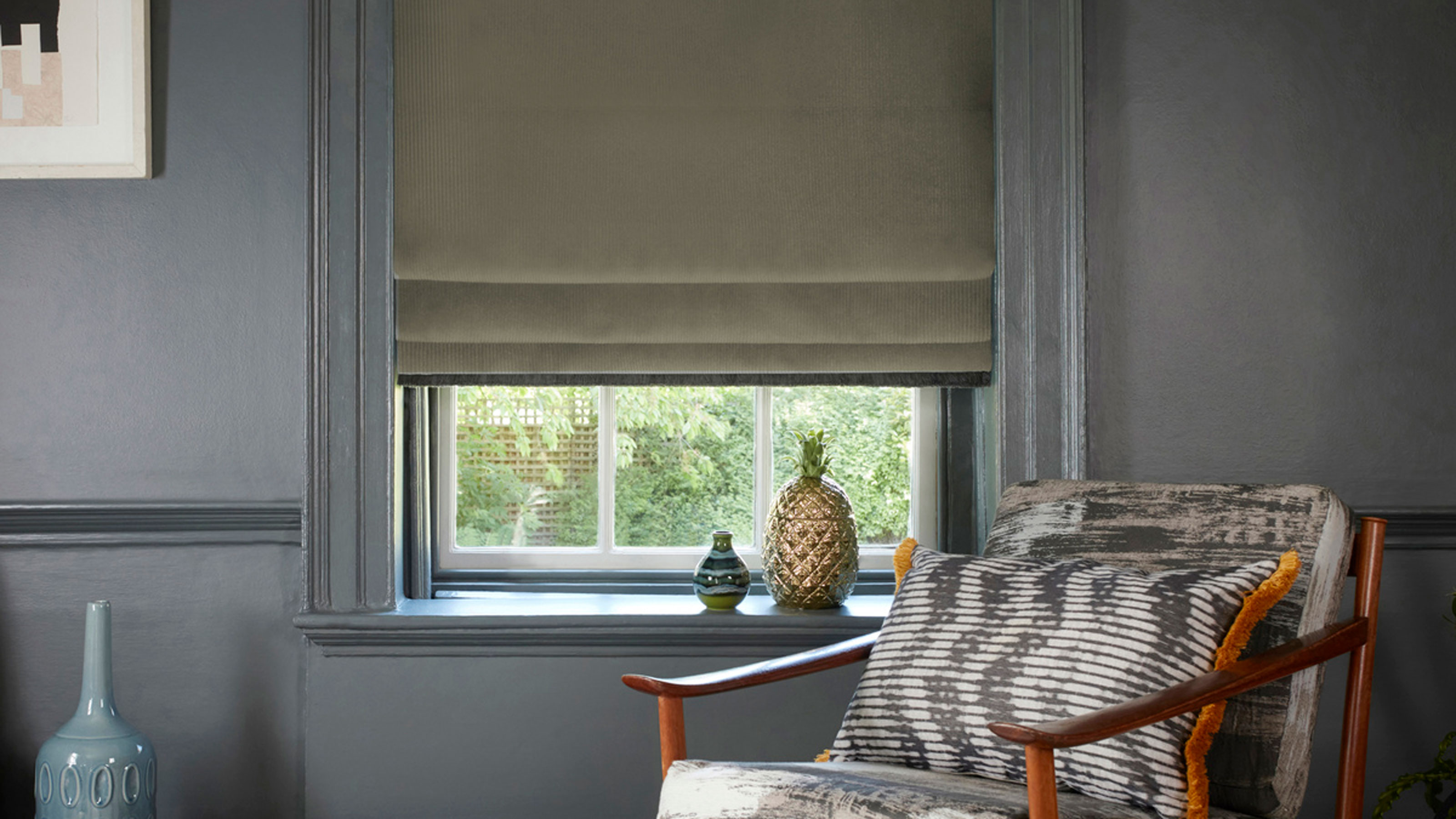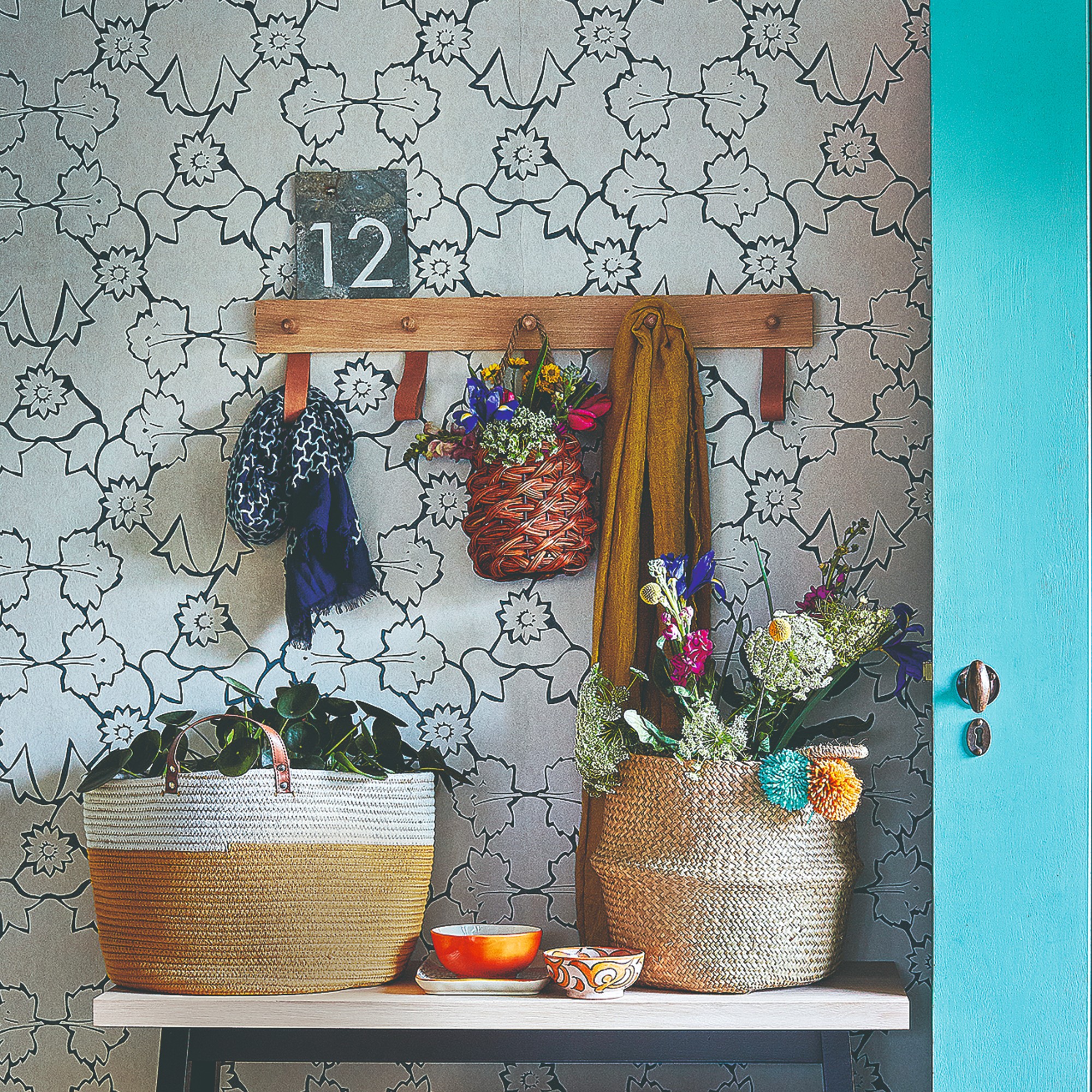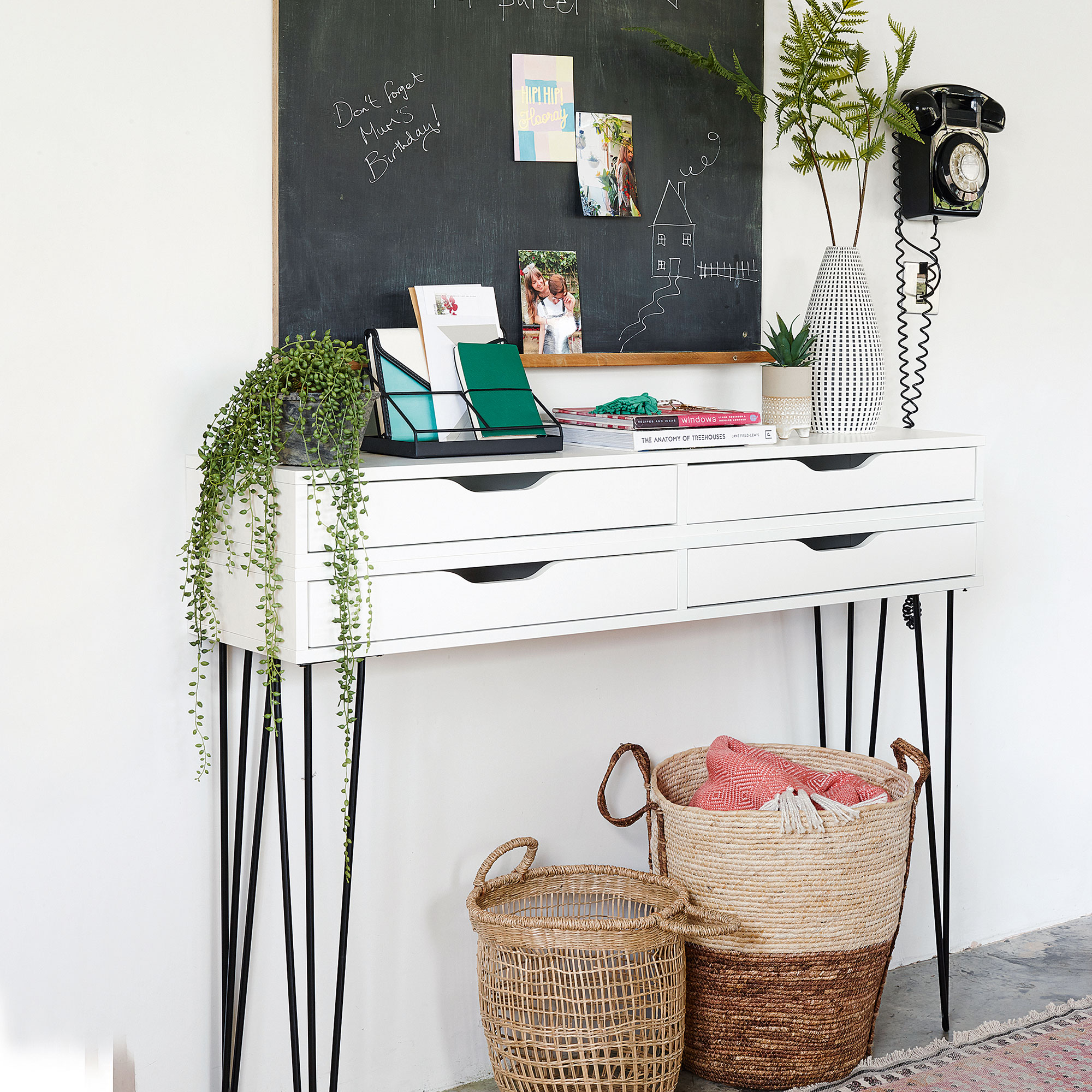How to fit blackout blinds – Expert advice on how to measure and install them in a bedroom or living room
DIY your way to a darker room and better nights sleep


If the sun comes peeping through your bedroom window long before your alarm is due to go off, the result is a sleep-deprived and grumpy you. An eye mask can help, but a better fix is fitting a blackout blind.
Adding blackout blinds to your bedroom blind ideas have more benefits than you might think: ‘They are a great way to prevent light entering a room, whether for sleeping or to create a dark cinema experience at home for watching movies,’ explains interior designer Anna Ward.
‘For extra-sunny rooms, some blackout linings include UV resistance which helps with temperature control in the room and prevents fading of the furniture and furnishings.’
How to fit blackout blinds
‘Blackout blinds are made from a thick, opaque fabric that’s densely woven to prevent light from passing through. Many types also incorporate a light-blocking lining or coating on the back of the fabric which further enhances their ability to absorb or reflect light, depending on the specific material’s properties,' explains Swift Direct Blinds’ Product Director Nichola McFall. This means they are almost the same as fitting a standard blind so it is an easy DIY project.
There are loads of styles to choose from including roller, double roller, Roman, vertical, pleated, honeycomb and skylight blinds, not to mention colours. We've pulled together to help you nail the basics of fitting your black-out blind to help you sleep better this summer.

What you'll need
- Metal tape measure, available from B&Q
- Pipe and wire detector, available on Amazon
- Drill, we like the Bosch Easy Impact Drill, available on Amazon
- Wood or masonry
- Screws
- Wall plug, plasterboard anchors or toggle bolts
- Spirit level, we like this one from Wickes
1. Measure up
First, you need to decide if your blind is going to sit inside or outside the window recess. Nichola McFall says, ‘Most people prefer the neat appearance of blinds fitted inside the recess, but if room darkening is the main aim, fitting it outside the recess is the way to go. There is more light seepage with inside-mounted blinds because light can escape through the gaps at the sides, top and bottom. When the blind overlaps the entire recess, gaps are minimised. I recommend overlapping your blinds outside the recess by 7.5cm on each side (including the top and bottom).'
This is the most important step when measuring for a blind, a blackout blind that doesn't block out the light because it's the wrong size is no good to anyone.

2. Get the right fixings for your wall
Simon Bessell, Director of The DIY School in Stockport, Cheshire, says, ‘Choosing the right method and fixing for your substrate ensures your window blinds are safely and securely mounted. Choose fixings that are long enough to secure firmly but not so long they penetrate too far.’
He adds, ‘Always buy good-quality fixings, the ones that come with blinds are usually of inferior quality or might not be suitable for your installation.’
For brick or concrete, insert plastic or metal wall plugs first and use masonry screws. ‘For problematic walls such as old stone walls, use a chemical anchor,’ advises Simon. For drywall or plasterboard, specialist anchors give additional support, or use toggle bolts if you’re fixing a heavy blind to weak drywall or hollow internal walls.

Simon founded The DIY School in Stockport, Cheshire, 16 years ago and since then it has trained more than 15,000 students – both novices and tradespeople looking to gain skills. Simon is a regular guest on BBC Radio Manchester and has appeared on ITV’s Tonight, BBC Breakfast News and BBC Two’s Inside the Factory
3. Check for obstructions before drilling
Simon warns, ‘Be aware of hidden pipes or wiring. Old houses have them in strange places! Always know where the fuse and water stopcock are, so if you do accidentally drill into a pipe or wire, you can make it safe.’

4. Drill the holes for the bracket fixings
Mark the drill holes on the wall by positioning the bracket in place and using the holes as a stencil. Tap a screw or drill bit with a hammer to create a dent to prevent the drill from slipping.
Simon advises, ‘Always start with a drill bit half the size of the screw or anchor you intend to fix. Increase in size by 5mm/1mm until the hole is correct. You can easily make a hole bigger, but it takes much longer to make it smaller! If it all goes wrong, don’t worry, just fill the holes with a good quality filler and start again tomorrow! Use a spirit level to ensure brackets are aligned properly.’

5. Fit, make safe and maintain
The last, and most satisfying, task is to click the blind unit into place. New blinds with looped cords will have a child-safety device fitted (a tidy, tensioner or cleat). This should be fitted to an adjoining surface so that the cord or chain is held tight. Be aware that if you have bought yours second-hand, this might not be supplied.
FAQs
Which way should blackout blinds face?
Blackout blinds have the blackout coating on one side (the back) and the patterned or coloured side on the other, which should face into the room.
How do you install blackout blinds without drilling?
You’ll need a special type of blind. Nichola McFall lists the options available for no-drill blinds and Swift and other blind retailers:
Twist fit – ‘They don’t need brackets. Just twist the turning wheel to lock the blinds into place inside the recess.’
Perfect Fit – These have their own frame which clips onto the existing window. ‘Great for tricky uPVC windows and doors, including French doors and tilt-and-turn windows.’
Clip on – ‘Another great choice for tricky windows and doors. They are frameless and even work on bifolds.’
Stick on – ‘These feature adhesive strips which stick to the window pane. Perfect for renters or those who want a non-permanent solution.’
Click in - Blinds 2 Go offers this style of no-drill blind, called Click2Go. It is best suited to blinds in a recess fitting. It is made to size and simply clicks into place.
Should blackout blinds go inside or outside the recess?
Simon Bessell says, ‘Mounting blinds outside the window frame covers more of the wall and provides better light control.’
Anna Ward adds, ‘It depends on the window, level of blackout needed and if there are other blinds or curtains being used on the window, too.’ Also consider the effect the blind will have when it’s open: ‘All blinds need space to roll or stack up into when closed, so that needs to be thought about. More of the glass is covered when blinds are installed inside the recess, whereas blinds mounted outside can use the space above a window to stack into, maximising the light coming in through the window when the blind is open.’
With your blind in place, all that’s left to enjoy the deep sleep that complete darkness allows…
Get the Ideal Home Newsletter
Sign up to our newsletter for style and decor inspiration, house makeovers, project advice and more.

Vanessa Richmond has been a freelance writer, editor and editorial consultant since 2021. Her career in magazines began in 1998 and, apart from a four-year stint at women’s lifestyle magazine Red, it has been spent working on interiors titles including House Beautiful, Country Homes & Interiors and Style at Home. She is a former editor of Ideal Home, Country Homes & Interiors and Style at Home magazines. She has also worked for House Beautiful and Red. During her 25 years as a journalist, she has been a sub-editor, columnist, deputy editor and editor. Now she combines freelance writing with being a secondary-school English teacher.
-
 5 signs you’ve taken decluttering too far — and how you can pull yourself back, according to organisation experts
5 signs you’ve taken decluttering too far — and how you can pull yourself back, according to organisation expertsYou might have to start resisting the urge to purge
By Lauren Bradbury
-
 What is the Party Wall Act 3m rule and is it something you should be worried about? This is what the experts say
What is the Party Wall Act 3m rule and is it something you should be worried about? This is what the experts sayDon't get caught off-guard by the Party Wall Act 3m rule — our expert guide is a must-read
By Natasha Brinsmead
-
 Shoppers can’t get enough of The Range’s lemon tree, but I’ve found an even cheaper bestseller at B&Q - it’s perfect for a Mediterranean look
Shoppers can’t get enough of The Range’s lemon tree, but I’ve found an even cheaper bestseller at B&Q - it’s perfect for a Mediterranean lookWelcome the summer with this glorious fruit tree
By Kezia Reynolds
-

 Experts say this flooring option can improve air quality – and chances are you already have it in your home
Experts say this flooring option can improve air quality – and chances are you already have it in your homeAchieving a healthy home environment has never been easier
By Maddie Balcombe
-

 How to get rid of emotional clutter in the home – free yourself from the things keeping you stuck in the past
How to get rid of emotional clutter in the home – free yourself from the things keeping you stuck in the pastEmotional clutter is the hardest to clear out, but we have some advice from the experts on how to tackle it
By Vanessa Richmond
-
 Productivity hacks for tackling life admin - this is how the experts keep their homes running smoothly
Productivity hacks for tackling life admin - this is how the experts keep their homes running smoothlyTips to get you, your wardrobe and your home in order and keep them that way
By Andrea Childs
-
 How to give your home a September reset - get the house (and kids) ready for back-to-school season
How to give your home a September reset - get the house (and kids) ready for back-to-school seasonTrain the kids in these systems and strategies to make Monday to Friday more manageable
By Vanessa Richmond
-

 7 mindful ways to clean your home - don't stress about chores, turn them into therapy
7 mindful ways to clean your home - don't stress about chores, turn them into therapyExperts share the proven ways you can turn cleaning into selfcare
By Vanessa Richmond
-
 9 mindful ways to declutter your home - turn a stressful chore into a calming, reflective ritual
9 mindful ways to declutter your home - turn a stressful chore into a calming, reflective ritualTackle your next decluttering session with this mindful approach and feel the benefits
By Vanessa Richmond
-

 How to use essential oils to clean your home naturally – everything you need to know
How to use essential oils to clean your home naturally – everything you need to know8 essential oils to choose for a naturally clean home
By Andrea Childs
-
 How to make cleaning a habit - tricks experts use to make maintaining a clean home easier
How to make cleaning a habit - tricks experts use to make maintaining a clean home easierGet it right and you’ll never have to do a ‘big clean’ again
By Vanessa Richmond